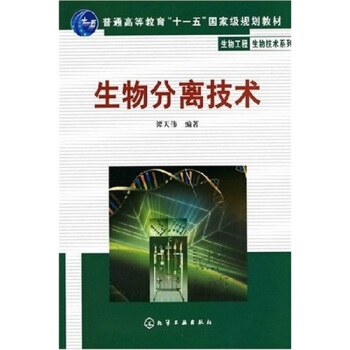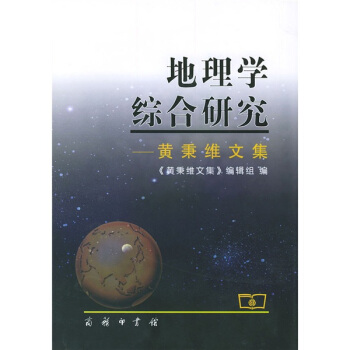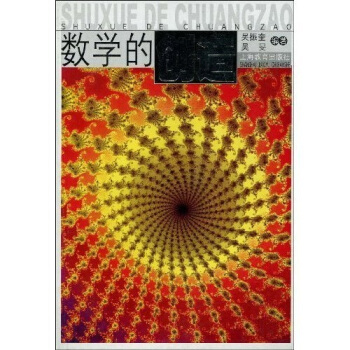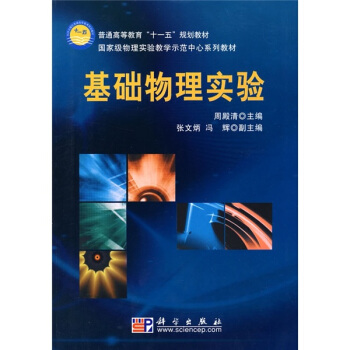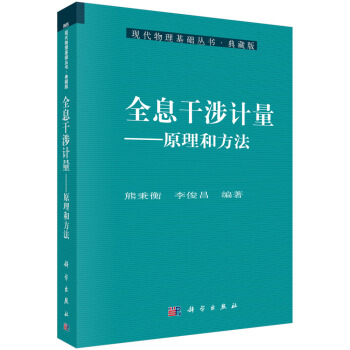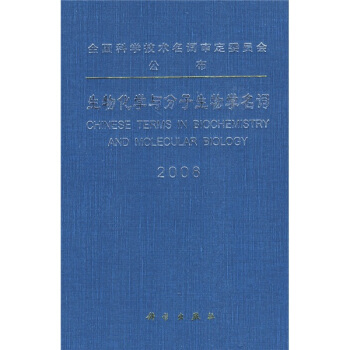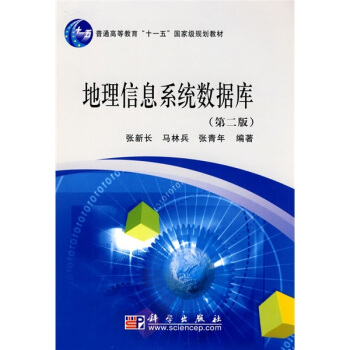![欧氏空间上的勒贝格积分(修订版)(英文版) [Lebesgue Integration on Euclidean Space Revised Edition]](https://pic.tinynews.org/10184606/09f2a576-82ee-4fb5-adf2-f8e2aba380a7.jpg)
欧氏空间上的勒贝格积分(修订版)(英文版) [Lebesgue Integration on Euclidean Space Revised Edition] pdf epub mobi txt 电子书 下载 2025
- Lebesgue integration
- Real analysis
- Measure theory
- Euclidean space
- Mathematical analysis
- Functional analysis
- Advanced calculus
- Probability theory
- Harmonic analysis
- Mathematical foundations

具体描述
内容简介
《欧氏空间上的勒贝格积分(修订版)(英文版)》简明、详细地介绍勒贝格测度和Rn上的积分。《欧氏空间上的勒贝格积分(英文版)》的基本目的有四个,介绍勒贝格积分;从一开始引入n维空间;彻底介绍傅里叶积分;深入讲述实分析。贯穿全书的大量练习可以增强读者对知识的理解。目次:Rn导论;Rn勒贝格测度;勒贝格积分的不变性;一些有趣的集合;集合代数和可测函数;积分;Rn勒贝格积分;Rn的Fubini定理;Gamma函数;Lp空间;抽象测度的乘积;卷积;Rn+上的傅里叶变换;单变量傅里叶积分;微分;R上函数的微分。读者对象:《欧氏空间上的勒贝格积分(修订版)(英文版)》适用于数学专业的学生、老师和相关的科研人员。
内页插图
目录
PrefaceBibliography
Acknowledgments
1 Introduction to Rn
A Sets
B Countable Sets
C Topology
D Compact Sets
E Continuity
F The Distance Function
2 Lebesgue Measure on Rn
A Construction
B Properties of Lebesgue Measure
C Appendix: Proof of P1 and P2
3 Invariance of Lebesgue Measure
A Some Linear Algebra
B Translation and Dilation
C Orthogonal Matrices
D The General Matrix
4 Some Interesting Sets
A A Nonmeasurable Set
B A Bevy of Cantor Sets
C The Lebesgue Function
D Appendix: The Modulus of Continuity of the Lebesgue Functions
5 Algebras of Sets and Measurable Functions
A Algebras and a-Algebras
B Borel Sets
C A Measurable Set which Is Not a Borel Set
D Measurable Functions
E Simple Functions
6 Integration
A Nonnegative Functions
B General Measurable Functions
C Almost Everywhere
D Integration Over Subsets of Rn
E Generalization: Measure Spaces
F Some Calculations
G Miscellany
7 Lebesgue Integral on Rn
A Riemann Integral
B Linear Change of Variables
C Approximation of Functions in L1
D Continuity of Translation in L1
8 Fubinis Theorem for Rn
9 The Gamma Function
A Definition and Simple Properties
B Generalization
C The Measure of Balls
D Further Properties of the Gamma Function
E Stirlings Formula
F The Gamma Function on R
10 LP Spaces ,
A Definition and Basic Inequalities
B Metric Spaces and Normed Spaces
C Completeness of Lp
D The Case p=∞
E Relations between Lp Spaces
F Approximation by C∞c (Rn)
G Miscellaneous Problems ;
H The Case 0[p[1
11 Products of Abstract Measures
A Products of 5-Algebras
B Monotone Classes
C Construction of the Product Measure
D The Fubini Theorem
E The Generalized Minkowski Inequality
12 Convolutions
A Formal Properties
B Basic Inequalities
C Approximate Identities
13 Fourier Transform on Rn
A Fourier Transform of Functions in L1 (Rn)
B The Inversion Theorem
C The Schwartz Class
D The Fourier-Plancherel Transform
E Hilbert Space
F Formal Application to Differential Equations
G Bessel Functions
H Special Results for n = i
I Hermite Polynomials
14 Fourier Series in One Variable
A Periodic Functions
B Trigonometric Series
C Fourier Coefficients
D Convergence of Fourier Series
E Summability of Fourier Series
F A Counterexample
G Parsevals Identity
H Poisson Summation Formula
I A Special Class of Sine Series
15 Differentiation
A The Vitali Covering Theorem
B The Hardy-Littlewood Maximal Function
C Lebesgues Differentiation Theorem
D The Lebesgue Set of a Function
E Points of Density
F Applications
G The Vitali Covering Theorem (Again)
H The Besicovitch Covering Theorem
I The Lebesgue Set of Order p
J Change of Variables
K Noninvertible Mappings
16 Differentiation for Functions on R
A Monotone Functions
B Jump Functions
C Another Theorem of Fubini
D Bounded Variation
E Absolute Continuity
F Further Discussion of Absolute Continuity
G Arc Length
H Nowhere Differentiable Functions
I Convex Functions
Index
Symbol Index
前言/序言
"Though of real knowledge there be little, yet of books there are plenty" -Herman Melville, Moby Dick, Chapter XXXI.The treatment of integration developed by the French mathematician Henri Lebesgue (1875-1944) almost a century ago has proved to be indispensable in many areas of mathematics. Lebesgues theory is of such extreme importance because on the one hand it has rendered previous theories of integration virtually obsolete, and on the other hand it has not been replaced with a significantly different, better theory. Most subsequent important investigations of integration theory have extended or illuminated Lebesgues work.
In fact, as is so often the case in a new field of mathematics, many of the best consequences were given by the originator. For example,Lebesgues dominated convergence theorem, Lebesgues increasing convergence theorem, the theory of the Lebesgue function of the Cantor ternary set, and Lebesgues theory of differentiation of indefinite integrals.
Naturally, many splendid textbooks have been produced in this area.I shall list some of these below. They axe quite varied in their approach to the subject. My aims in the present book are as follows.
1. To present a slow introduction to Lebesgue integration Most books nowadays take the opposite tack. I have no argument with their approach, except that I feel that many students who see only a very rapid approach tend to lack strong intuition about measure and integration. That is why I have made Chapter 2, "Lebesgue measure on Rn,"so lengthy and have restricted it to Euclidean space, and why I have (somewhat inconveniently) placed Chapter 3, "Invaxiance of Lebesgue measure," before Pubinis theorem. In my approach I have omitted much important material, for the sake of concreteness. As the title of the book signifies, I restrict attention almost entirely to Euclidean space.
2. To deal with n-dimensional spaces from the outset. I believe this is preferable to one standard approach to the theory which first thoroughly treats integration on the real line and then generalizes. There are several reasons for this belief. One is quite simply that significant figures are frequently easier to sketch in IRe than in R1! Another is that some things in IR1 are so special that the generalization to Rn is not clear; for example, the structure of the most general open set in R1 is essentially trivial —— it must be a disjoint union of open intervals (see Problem 2.6). A third is that coping with the n-dimensional case from the outset causes the learner to realize that it is not significantly more difficult than the one-dimensional case as far as many aspects of integration are concerned.
3. To provide a thorough treatment of Fourier analysis. One of the triumphs of Lebesgue integration is the fact that it provides definitive answers to many questions of Fourier analysis. I feel that without a thorough study of this topic the student is simply not well educated in integration theory. Chapter 13 is a very long one on the Fourier transform in several variables, and Chapter 14 also a very long one on Fourier series in one variable.
用户评价
我阅读这本书的初衷是想系统性地巩固我在实分析和测度论方面的知识体系,并特别关注其在高等微积分和泛函分析中的应用前景。这本书的叙述风格非常严谨、逻辑链条环环相扣,它不像某些教材那样过于口语化或试图用过于简化的比喻来“讨好”初学者,而是直接深入到数学的本质,要求读者具备一定的预备知识和专注度。作者在处理勒贝格测度和积分理论的构建时,每一步的推导都基于前一个已建立的框架,过渡自然且无可指摘。特别是对于那些处理极限与积分交换顺序的核心定理(如法图/勒贝格控制收敛定理等),书中给出的证明详尽而透彻,不仅展示了“如何证明”,更阐释了“为何如此”。对于希望达到能够独立进行数学研究水平的读者而言,这种毫不妥协的严谨性是极其宝贵的财富。它迫使你不能走捷径,必须真正理解每一个假设和每一步逻辑跃迁背后的深刻含义。
评分这本书的国际化视野和其作为“修订版”的价值,体现在它对现代数学术语和惯例的接纳上。作为一个面向全球读者的英文原版教材,它使用的语言精准、规范,完全符合国际主流数学期刊的表达标准。这对于那些计划未来在国际舞台上进行学术交流或深造的读者来说,是一个巨大的加分项。修订版通常意味着它吸纳了自初版以来学界对某些概念理解的深化或更优化的表达方式,在这本书中,我能感受到作者对细节的打磨,比如对某些函数空间定义的细微调整,或是对某些经典例子论述方式的优化,都体现了作者紧跟时代步伐的专业态度。阅读这样的英文原著,本身就是一种对专业英语的训练,它让你习惯于用最精确的数学语言去思考问题,而不是依赖于二手翻译可能带来的歧义,这种沉浸式的学习体验是无可替代的。
评分这本书的装帧设计和纸张质量给我留下了非常深刻的印象。封面采用了一种沉稳的深蓝色调,配合烫金的书名,散发出一种专业而又不失典雅的气质。拿在手里,能感受到纸张的厚实与光滑,这对于一本数学专著来说至关重要,因为它意味着在反复翻阅和演算的过程中,书页不易磨损或泛黄。内页的排版也极其考究,黑白分明的字体和清晰的数学符号排列,让阅读体验得到了极大的提升。很多时候,公式的阅读体验的好坏,很大程度上取决于排版是否舒适,而这本书在这方面做得非常出色,即便是面对那些错综复杂的积分定义和定理证明,也能保持视觉上的清晰度,减少了阅读疲劳感。我尤其欣赏它在图表和示意图上的处理,虽然是纯数学书,但某些概念的引入图示清晰明了,即使是抽象的概念,也能通过直观的几何理解作为辅助,这对于深入理解那些依赖于空间想象力的理论基础非常有帮助。整体而言,它不仅仅是一本知识的载体,更像是一件精心打磨的艺术品,让人在翻阅时便心生敬畏,愿意花更多时间沉浸其中。
评分这本书最让我赞赏的一点是它所蕴含的深刻洞察力,它不仅仅停留在勒贝格积分技术的层面,而是将测度论和积分理论置于更宏大的数学结构中进行审视。作者在论述过程中,经常会穿插一些历史背景的简要介绍,或者指出某个理论的局限性及其如何启发了后续更强大的理论(比如从黎曼到勒贝格,再到更一般的抽象积分理论)。这种“带着历史感”的叙述方式,使得读者不仅学会了工具的使用,更能理解这些工具是如何在数学思想的演进中诞生的。它让你看到,数学概念并非凭空出现,而是解决实际难题的必然产物。通过对欧氏空间这一具体背景的深入探讨,作者成功地架设了一座桥梁,连接了直观的几何感受与抽象的分析世界,为读者未来涉足更广阔的泛函分析或偏微分方程领域打下了坚实而灵活的基础。
评分从教学法的角度来看,这本书更像是为研究生或高年级本科生量身定做的进阶读物,而非入门教科书。它的难度曲线设置得比较陡峭,开篇便直奔主题,对基础概念的铺垫相对较少,更多的是假设读者已经熟悉了黎曼积分和基础拓扑概念。然而,正是这种略带挑战性的设计,反而激发了我主动探索的欲望。书中提供的习题设计得极为巧妙,它们并非简单的计算题,而是很多具有启发性的命题,旨在巩固读者对理论的理解,并引导他们思考积分理论在更高维度空间中的推广可能性。我发现,认真思考并尝试解决这些习题的过程,比单纯阅读章节内容更能巩固知识点。每当解决一个复杂的习题后,那种豁然开朗的感觉,正是高级数学学习中最令人着迷的部分,而这本书恰恰提供了充足的“成就点”来维持学习的热情。
评分、35无理数)在实数中是“极少数的”的一样. 实变函数就是要以占有“绝大多数”的连续性质不好的实函数作为研究对象,这样数学分析的许多定义和工具都“不好使了”,必须建立适用有“绝大多数”的连续性质不好的实函数的积分理论,这是我们这本书的主要任务.
评分学专业的重要专业课程,该课程是数学分析的一门
评分很好的书
评分更加理论化,习题非常难做等特点. 学习不到一个
评分课程,在概念和方法上都有较大飞跃,更加抽象和
评分不上什么兴趣了,结果后期学习情况就会非常糟糕.
评分如果一个教“实变函数”的教师多从学生角度出发,
评分学专业的重要专业课程,该课程是数学分析的一门
评分类似2
相关图书
本站所有内容均为互联网搜索引擎提供的公开搜索信息,本站不存储任何数据与内容,任何内容与数据均与本站无关,如有需要请联系相关搜索引擎包括但不限于百度,google,bing,sogou 等
© 2025 book.tinynews.org All Rights Reserved. 静思书屋 版权所有




